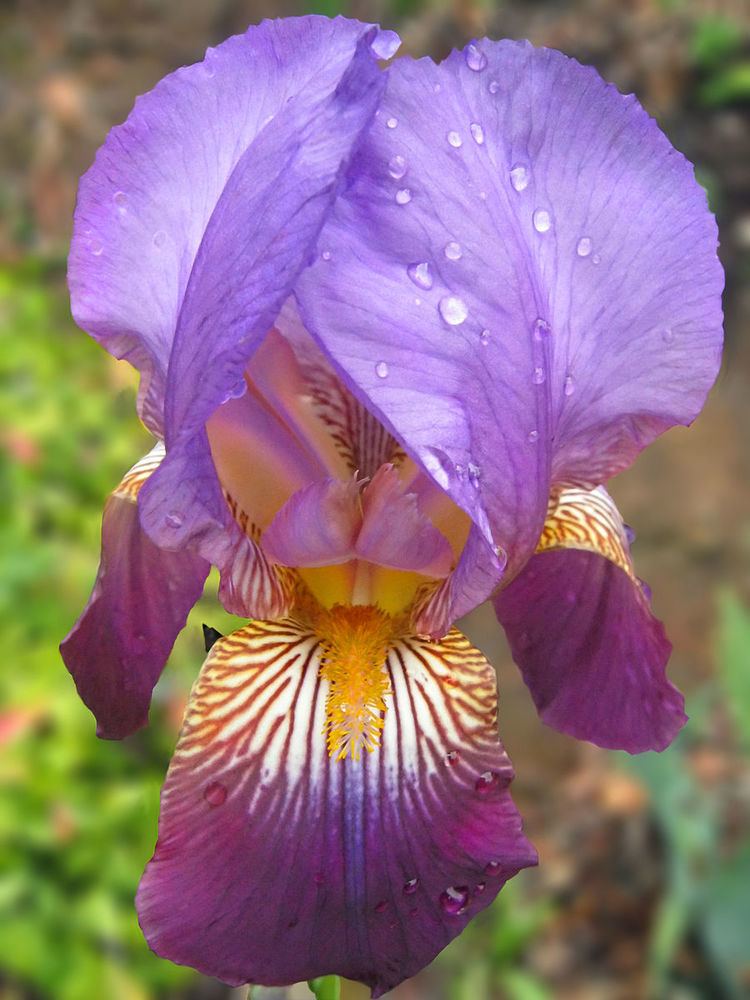Kingdom Plantae Family Iridaceae Tribe Irideae | Order Asparagales Subfamily Iridoideae Genus Iris | |
 | ||
Subgenus Iris is one subgenus of Iris, The genus was originally classified by Carl Linnaeus, but then further organised by Brian Mathew between 1981 and 1987.
Contents
It has been divided into six sections; bearded irises (or pogon irises), Psammiris, Oncocylclus, Regelia, Hexapogon and Pseudoregelia. Sections Oncocylclus and Regelia are also called aril irises.
Section bearded irises (or pogon irises)
This is the largest section of the subgenus. Most irises come from Southern or eastern Europe. Note 'pogon' refers to the Greek word for beard. It has several species of iris including;
It also includes thousands of ornamental plant hybrids, which have been divided into various height categories.
Psammiris
This section of irises was first described by Spach. Irises from Russia and Northwest china. Mostly rhizomatous, and flowering in late spring. Note psammos derives from the Greek word for sand.
Oncocylcus
Oncocylcus irises are rhizomatous perennials. They also generally need rich soils that drain easy and are in full sun. Most also prefer a dry period after flowering. The oncocylcus irises are mostly from Turkey, Caucasus and Iran. The flowers usually only have one flower, which is veined or spotted. Some of these species have been bred with bearded irises to create unique colours and markings. Oncocyclus is a Greek word, with onco meaning mass, or bulk, and cyclus meaning circle. In 1846, the term 'Oncocyclus' was first used by C.H. Siemssen as the Genus Oncocyclus in 1846 in Botanische Zeitung. Baker then re-classified it to a subgenus in 1877, than Dykes lowered it to a section in 1914, where it currently remains.
Regelia
Mostly from the mountainous regions of Iran, Afghanistan and the Altai Mountains. Most irises have a stem that has 2 flowers. It was named in 1904 by Robert Lynch in his book 'The Book of The Iris' after Dr Regel.
Hybrids of Regelia irises and Oncocyclus irises are known as 'Regelicyclous'.
Hexapogon
Mostly from the desert area of Central Asia, Iran and Afghanistan. Most irises have beards on the falls and standards. Note 'hexa' refers to the number 6 and 'pogon' refers to the Greek word for beard.
Pseudoregelia
Mostly from the mountainous regions of Eastern Asia. Most irises have flowers that have blothes or colour spots on.
